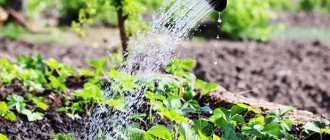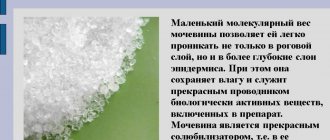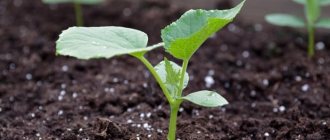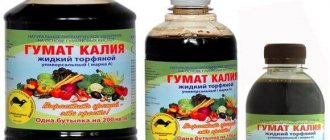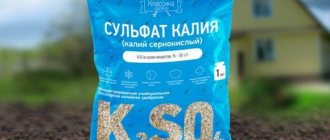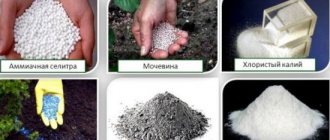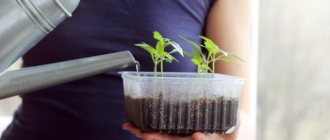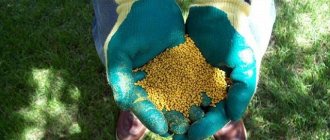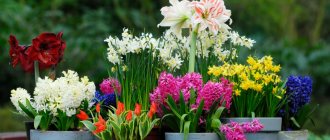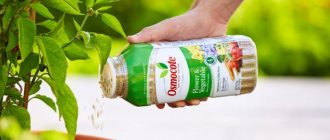- Fertilizer release forms.
- Macro- and microelements in fertilizers for indoor plants.
- What types of nitrogen fertilizers are there and what plants need nitrogen.
- Types of nitrogen fertilizers.
- What kind of soil should nitrogen fertilizers be applied to?
- What plants need nitrogen?
- Potassium fertilizers for indoor plants.
- How to determine potassium deficiency in a plant?
- Types of potash fertilizers.
- Which plants need potassium?
- All about phosphorus fertilizers.
- Phosphorus deficiency in plants - diagnosis.
- Types of phosphate fertilizers.
- Which plants should be fed with phosphorus fertilizers?
- Manure for fertilizing indoor plants.
- The benefits of peat as a fertilizer.
- Using bird droppings to fertilize plants.
- Compost for fertilizing plants.
- Is sawdust a fertilizer?
- Bone meal is a very effective organic fertilizer.
Plants, like all living organisms, need vitamins and minerals. And if “street” inhabitants receive all this from the outside, then with indoor plants things are different. Just imagine that we replant many indoor plants no more than once every 2-3 years, and sometimes less often. During this time, we water them as the soil dries out, but by replenishing the plants with life-giving moisture, we simultaneously wash out from the soil all the useful minerals that are so necessary to maintain a lush crown, flowering and growing season. And during the flowering period, all plants cannot do without additional nutrition , because the poor fellows use all their strength on this process, and without replenishing (with our help) their strength they can completely wither and die. In this case, you need to know how to quickly revive a houseplant.
Mineral fertilizers for indoor plants and flowers:
Mineral fertilizers can be nitrogen, potassium, phosphate or complex. Nitrogen, potassium and phosphorus are the main nutrients for plants.
Depending on the needs of a particular species and stage of development, the ratio and availability of these substances varies.
- Nitrogen fertilizers for indoor plants are mainly used during the active growing season (spring-summer) for maximum growth and development of shoots and leaves. They are mainly used for feeding decorative deciduous species.
- Potassium fertilizers, like nitrogen fertilizers, promote the growth of indoor plants, and together with phosphate fertilizers ensure abundant flowering. Fertilizers with a high content of potassium and phosphorus are used to feed decorative flowering species.
- Complex mineral fertilizers for house flowers are universal and applicable for most species.
Mineral fertilizers for indoor plants are produced mainly in liquid and dry (granules, powder) forms, and also come in tablets, capsules and sticks.
Methods for indicating the mineral content of a liquid solution
- % pure substance i.e. N/P/K – world system
- System of oxides of elements in % i.e. N/P2O5/K2O – CIS and Russia 3) grams per liter of element.
When preparing recipes, it is necessary to take into account that simple and double superphosphates are poorly soluble, and nitrogen fertilizers are divided into amide, ammonium and nitrate based on the quality of nitrogen.
Plants are able to assimilate only the ammonium form and all other species are converted to it through biochemical reactions.
.
Popular mineral fertilizers for plants
.
Advice
The amount of nitrogen-phosphorus-potassium (NPK) allows you to determine what types of plants the fertilizer is intended for.
For example, 15-5-5 is a lot of nitrogen, which means for decorative deciduous plants, 8-10-14 is a lot of phosphorus and potassium, which means for flowering plants, and 7-7-5 is a universal fertilizer.
Reviews on the use of nitrogen fertilizers
Natalya: “Of all the existing nitrogen fertilizers, I give preference to ammonium sulfate and am always satisfied with the result. The substance is perfectly absorbed into the soil and nourishes vegetables, especially eggplants and potatoes. The main thing when using is not to overdo it, otherwise you can harvest less than you planted.”
Maxim: “Nitrogen is one of the main structural elements of protein, and without it life on earth is impossible. However, it must be used strictly according to the rules. If you make a mistake, you may be left without a harvest; it certainly won’t be tasty. And it is also important to remember that the substance is neutralized by alkali, so it should not be added together with ash and other substances that alkalize the soil.”
Tatyana: “It is simply necessary to fertilize the soil with nitrogen, without it the harvest is not a harvest, and it’s just “tears.” I tried all the options for fertilizers with nitrogen, not counting liquid ones, and I was satisfied with all of them. However, I recommend that novice vegetable growers use fertilizers with a low content of basic substances so as not to overfeed the soil.
Nitrogen is a vital element for plants of any kind. Its application to the soil is an important stage in the cultivation of fruit, grain and even flower crops. But despite all the benefits of the chemical element, its improper use can cause irreparable harm to both the greenery and the quality of the soil as a whole.
Liquid fertilizers for indoor plants and flowers
Liquid fertilizers for indoor flowers and plants are a salt concentrate. To feed the plant, liquid fertilizer is diluted with water in a certain proportion, which is indicated in the instructions, and then watered.
- Efficiency . The root system of plants better absorbs nutrients in a liquid state.
- Convenience. It is easy to feed indoor flowers with fertilizer.
- Balanced composition. Liquid complex fertilizers for indoor plants take into account the individual needs of a particular species. For example, special complexes for succulents, orchids or palm trees.
- Possibility of foliar feeding through the stem and leaves. This feeding allows you not to oversaturate the plant with nutrients, but by spraying the leaves to make them brighter and thicker. Thus, the leaves will absorb the required amount of substances, and the plant will not be in danger of an excess of them. It must be remembered that the effectiveness of foliar feeding is maximum for young (1st year) indoor plants. In addition, plants with pubescent or glossy leaves practically do not absorb substances. These include: succulents, palm trees, Saintpaulia and other plants. IMPORTANT! Foliar feeding cannot replace root feeding and is an addition to it during the period of active growth and development of plants.
- Price. Liquid fertilizer for indoor plants is more expensive than granular fertilizer. Therefore, if you have a few plants and flowers, then this is the best option.
Liquid fertilizers for indoor flowers from Agricola
According to most experts, liquid mineral fertilizers are the best option for feeding indoor plants and flowers.
Potassium deficiency in plants
A lack of potassium in the soil affects the general condition of crops. Under natural conditions, it is found in the soil only in combination with other elements. Potassium starvation in different plant varieties manifests itself with typical symptoms:
- marginal burn - the appearance of a light border along the edge of the leaves, which then dries out;
- compaction and tarnishing of green mass;
- the appearance of brown spots;
- stunted growth compared to average;
- delay or absence of flowering period;
- weakness of the main stem and shoots;
- tendency to develop fungal infections.
The tendency to potassium starvation depends on the type of crop and type of soil. Thus, cereals absorb from 60 to 80 kg of potassium per 1 ha, and vegetables need 140-180 kg of this element per 1 ha. Different types of soil can contain from 0.5 to 3% potassium, with clay types being the richest. Peat soil is considered the poorest in the content of this element.
Dry mineral fertilizers
Dry fertilizer is a mixture of minerals in the form of granules or crystals. To feed, the dry mixture is diluted in water in strict accordance with the instructions so that there is no sediment at the bottom and the solution is completely homogeneous.
A small package of mineral fertilizer is usually diluted in 10-15 liters of water, so this is the best option for a large home garden.
Sticks for indoor plants
Tablets, sticks or capsules are long-acting fertilizers, i.e. minerals enter the plant gradually. One stick provides the plant with an average of three months (sometimes from 2 to 6).
The fertilizer usually contains nitrogen, potassium, magnesium, phosphorus, which is complemented by boron, manganese, iron, copper, molybdenum or zinc.
Recently, sticks against pests of indoor plants , which, in addition to feeding, help in the fight against insects (insecticide). Fertilizer sticks for pests contain the substance imidacloprid.
Application
Depending on the diameter of the container, calculate the number of sticks per indoor plant. It turns out something like this: 1 stick – up to 10 cm, 2 – 11-15 cm, 3 – 16-20 cm, 4 – 21-25 cm. The sticks are inserted into the substrate to a depth of 4-5 cm from the edge of the container at a distance of 1 -3 cm, and then the plant is watered.
.
The principle of operation of fertilizer sticks in a potted plant
.
Reviews
Opinions on the effectiveness of sticks for indoor plants among gardeners vary significantly. Experienced gardeners believe that using fertilizers in the form of sticks does more harm than good.
Near the sticks in the substrate there is an increased concentration of elements and insecticide, which negatively affects the root system.
Therefore, it is better to use fertilizer (for example, liquid with humic acids) and insecticide separately.
Advice
Objectively, we can say that when using nutrient sticks, it is better to break them into small pieces (crush), this way you will ensure a more uniform absorption of minerals by the plant.
PRICE. Depending on the manufacturer, in terms of one piece from 2 euro cents to 5.
How to prepare mineral fertilizer yourself?
- Nitrogen fertilizer: ammonium sulfate, ammonium nitrate or urea - 1 g per 1 liter of water.
- Potassium fertilizer: potassium sulfate, potassium salt or potassium chloride - 1.5 g per 1 liter of water.
- Phosphate fertilizer: dry superphosphate – 6 grams per 1 liter of water or 1 part per 30 parts of soil.
Application
When feeding vegetable crops, nitrogen fertilizers should be applied at the root, with deep incorporation into the soil. Most drugs are applied in the spring. When spraying, the concentration should be weaker than when applied under the root; otherwise, the plant may get burned.
General rules
Dosage of main types of fertilizers per 1 square meter of soil:
- ammonium nitrate – 15 g;
- calcium nitrate – up to 50 g;
- urea – 20 g;
- double superphosphate – 15 g.
You can determine the mass of the drug using the table below.
| Unit | Amount of granular or liquid nitrogen fertilizer, g |
| Matchbox | 20 |
| Tea spoon | 5 |
| Tablespoon | 10 |
| Cup | 100 |
Most granular substances are highly soluble. To dissolve the powder and dilute liquid nitrogen fertilizers, water at room temperature is used. If you use hot water, the fertilizer will lose some of its beneficial properties.
Application for plants
When feeding vegetable and fruit crops, granular and liquid nitrogen fertilizers are used. Most often they are introduced in the spring, but there are exceptions to the rule.
How to choose the right one
When choosing a nitrogen fertilizer, you should take into account the type of plants and their needs, as well as the type of soil. For acidic soil, fertilizers containing sodium or potassium are suitable. For alkaline soil, a nitrogen fertilizer containing sulfur or phosphorus is recommended.
in autumn
In autumn it is recommended to apply superphosphate, ammophos or diammophos. They are used to feed bushes. If the soil is sandy loam, this fertilizer is applied annually; in other cases, once every two years is sufficient. In dry form, fertilizing is applied when frosts have already begun.
in spring
In spring, ammonium, potassium or sodium nitrate (for heavy soils) should be applied. For light soils, the best option is manure, compost or humus. Solid fertilizers are scattered on the ground in a thin, even layer and covered with soil. After this, watering should be done.
Organic fertilizers for indoor plants
Organic fertilizers include: manure, litter, compost, humus - excellent suppliers of nitrogen, and wood ash - an excellent source of potassium and calcium.
There is a lot of debate among specialists and experienced gardeners regarding the advisability of feeding indoor plants with organic fertilizers.
We can say for sure that organic fertilizers make the soil mixture more moisture- and breathable, especially the periodic application of humus, and stimulate the active growth of green mass.
Wood ash, according to leading experts, is the most perfect organic fertilizer for indoor plants.
We talked about it in detail in the additional material to this article about home fertilizers.
Peculiarities
Organic or natural fertilizers for indoor plants have their own specifics. Organic fertilizers are not suitable for bulbous and corm species, and variegated decorative-deciduous plants can become ordinary green if improperly fertilized.
Preparation
Before feeding plants, organic matter must be sterilized. Sterilization is carried out only with the help of fire, and after that it is kept for 20-25 days to restore the biological environment.
- Therefore, experts advise buying organic supplements in ready-made form.
Application
Flower growers recommend using mullein infusion (one tablespoon per one liter of water) or bird droppings (one teaspoon per one liter of water).
This fertilizer is recommended for use for large and fast-growing plants, and it has a particularly beneficial effect on asparagus, vines, indoor roses, palm trees, pelargonium and primrose.
| A unique complex fertilizer increases the yield up to 10 times! |
Vermicompost for indoor plants
Many experienced gardeners believe that it is better to use organic fertilizers for indoor plants (except ash) based on vermicompost (Vermistim, Humisol).
In the composition of such fertilizers, pay attention to the % of humic substances (salts or acids).
Application of vermicompost
We offer ways to use vermicompost for indoor plants and seedlings, namely the substance itself, and not a liquid concentrate (extract).
- For nutrient substrate. Vermicompost, garden soil, sand – 1:4:1. This universal recipe is suitable for planting and replanting many types of indoor plants, but certain types require individual amendments.
- To accelerate root formation. 1 tsp. per 100 ml of water - place a cutting of a houseplant in this nutrient solution.
- For mulching and fertilizing. A layer of soil mixture (1-2 cm) is removed from above and vermicompost is poured in its place, and then watered with water. This bookmark lasts for about 2-3 months.
- For feeding. 5-6 tbsp. l. Vermicompost is dissolved in one liter of water and left for 24 hours. Then water the plants and flowers every 10-14 days. Before this, the solution must be stirred.
.
One of the options for organic fertilizer with vermicompost
.
Peculiarities
The pH of vermicompost is 6.5-7.5, almost neutral. Vermicompost may contain worker worms, but they do not damage the plant, and after they grow up they can be thrown outside. It is undesirable to sterilize vermicompost - its beneficial properties are lost. Real vermicompost does not mold.
Amide fertilizers
Such fertilizers include urea . It ranks second in terms of nitrogen content in its composition. Its amount in the composition reaches 46%. Urea is produced in granules that are covered with a film. The granules contain fats that prevent the substance from caking.
When using urea, surface spreading of the fertilizer is not allowed. This is due to the fact that when it reacts with soil bacteria, it is converted into ammonium carbonate. This is the most accessible and easiest form for absorption by plants. But we should not forget that when it interacts with oxygen in the air, it begins to decompose. Due to decomposition, ammonia is released in gaseous form, which evaporates. Therefore, the effectiveness of the applied fertilizer decreases.
In terms of its use, urea is a universal remedy . It is very capable of increasing the yield of a variety of crops. It is very good to use it on those soils that are subject to stable moisture. This is due to the fact that it is washed out with water less than other fertilizers.
Calcium cyanamide contains 20% nitrogen. This is a gray dark powder that is completely insoluble in water and is an alkaline fertilizer. Due to the high calcium content of fertilizers, it is recommended to use it on acidic soils, which are well neutralized by this composition. On alkaline soils it must be used together with acidic fertilizers or limited. It is necessary to add calcium cyanamide to the soil before planting. This is due to the fact that when interacting with soil bacteria, cyanamide is formed. And it can weaken plants, and in some cases lead to their death. After about 10 days (not earlier), the fertilizer is processed into urea.
Fertilizers for flowering indoor plants
Flowering indoor plants are fed with a special fertilizer, as certain minerals are needed for abundant flowering.
Fertilizer for flowering indoor plants allows you to achieve better and longer flowering, prevents buds from falling off and helps produce fruit.
Basic fertilizer for flowering, approximate composition: nitrogen (N) - 10 g/liter, phosphorus (P) 20 g/liter, potassium (K) 30 g per 10 liters of water + vitamins B1, B6 and PP.
Castor oil
Fertilizing with castor oil, according to some gardeners, is very effective for beautifully flowering plant species at the time of bud setting (budding) - 1 tsp. for 1 liter of water.
Liquid fertilizers for feeding flowering indoor plants
- For young plants. Potassium salt, ammonium nitrate, superphosphate - 15:10:15 g per 10 liters of water.
- Before budding for flowering. Potassium salt, ammonium nitrate, superphosphate - 15:20:25 g per 10 liters of water.
- After flowering. Potassium salt, ammonium nitrate, superphosphate - 10:20:25 g per 10 liters of water.
Recommendations
- Flowering indoor plants need to be fed as soon as the buds appear and continue until flowering ends.
- Carefully observe the dosage and frequency of fertilizing - an excess of minerals has a negative effect on the plant.
- An excess of nitrogen is especially undesirable, as it stimulates the growth of green mass and slows down flowering.
- Potassium and phosphorus are the key to successful flowering and fruiting. Some gardeners prefer to use “Ideal” fertilizer for flowering indoor plants with a high phosphorus content.
- Before flowering, phosphorus is the most essential substance for a plant; if it is deficient, growth and development are delayed, brownish-purple spots appear on the leaves, and they themselves curl.
.
Liquid fertilizers for indoor plants from Pokon: for flowering, decorative and deciduous species and universal.
.
Possible harm to plants from the use of nitrogen fertilizing
Despite the fact that nitrogen is an important structural element for all plants, fertilizers containing it do not always bring only benefits. Failure to comply with dosages, improper use, and errors in application techniques often cause problems that can even lead to the death of plants. If precautions are not followed, first of all, the fruit ovaries, or rather their number, will suffer.
In case of an excess of the substance, fruiting suffers; fruits are either set in small quantities or not set at all. This is especially true for strawberries, wild strawberries and other berry crops.
A plant overfed with nitrogen accumulates excess water and becomes a real magnet for various pests. In addition, its influence can provoke the appearance of burns on the leaves, which can subsequently spread to the root system.
Pros and cons of nitrogen fertilizer
Accelerates plant growth.
Stimulates the appearance of new leaves, shoots and fruit ovaries.
Increases the amount of harvest and improves its taste.
Improves the process of absorption of micro- and macroelements by plants from the soil.
Positively affects the composition and microflora of the soil.
Increases crop resistance to various diseases and pests.
Accelerates compensatory processes of plants in case of mechanical damage.
Improves grain quality indicators.
A universal fertilizer suitable for both fruit crops and indoor flowers.
It acidifies the soil, which must be taken into account when applying it.
Some types of fertilizers cannot be used without special equipment.
Contaminates soil and water in case of excessive and uncontrolled use.
Groundwater and wastewater easily wash nitrogen out of the soil.
Poorly absorbed into dry soils.
It is important to calculate the amount of fertilizer for each type of plant.
There is a possibility of oversaturating the soil, which will have a detrimental effect on the amount of harvest.
Characteristics and physical properties of potassium chloride
"Increasing banana yields using
Israel
potassium chloride!", advertisement above a highway in a fast-growing banana area
Hekou County
,
Yunnan
, China
The crystal structure of potassium chloride is like NaCl. It adopts a face-centered cubic structure. Its lattice constant is approximately 6.3 Å. Crystals can be easily split in three directions.
Some other properties
- Transmission range: 210 nm to 20 µm
- Transmittance = 92% at 450 nm and increases linearly to 94% at 16 µm
- Refractive index = 1.456 at 10 µm
- Reflection Loss = 6.8% at 10 µm (two surfaces)
- d N/d T (expansion coefficient) = -33.2 × 10 -6/°C
- d l / d T (refractive index gradient) = 40 × 10 -6 / ° C
- Thermal conductivity = 0.036 W/(cm K)
- Damage threshold (Newman and Novak): 4 GW/cm2 or 2 J/cm2 (0.5 or 1 ns pulse rate); 4.2 / cm J 2 (1.7 ns Pulse rate Kovalev and Faizullov)
As with other potassium-containing compounds, KCl, in powder form, gives lilac flame.
Rice. 1. Potassium chloride. Appearance.
Table 1. Physical properties of potassium chloride.
| Molecular formula | KCl |
| Molar mass | 1,984 |
| Density (20oC), g/cm3 | 2,15 |
| Melting point, oС | 776 |
| Boiling point, oС | 1407 |
| Solubility in water (20oC), g/100 ml | 34 |
The formula of potassium chloride is KCl (molar mass - 74.5), the substance is found in minimal quantities almost everywhere and has the ability to be replenished from natural sources. It occurs in nature in the form of the minerals carnallite and sylvinite. The compound is also actively used in medicine.
Release form
Granular additives are more popular than fine-crystalline additives, since granules are absorbed into the soil faster and tolerate storage better. Granular potassium fertilizers are a high-quality product that is used in many regions of Russia to improve soil fertility.
Granular fertilizer slows down the penetration of nutrients into the soil layer, resulting in an increase in the duration of use of the additive. Potassium fertilizer can be applied separately or together with other fertilizers.
There is an opinion that if the soil is fertile, then there is no need to fertilize it with potassium chloride. But this is an erroneous judgment. On enriched soils, it is possible not to use nitrogen and phosphorus-containing fertilizers, but potassium fertilizers are extremely required, since they:
- increase plant resistance to diseases and pests;
- improve product quality - taste, color, size;
- have a positive effect on the formation of fruits, and especially tubers;
- reduce the possibility of crop dehydration;
- help plants better tolerate temperature changes;
- improve frost resistance of plants (perennials);
- increase the shelf life of the crop.
Potassium chloride has excellent solubility, so it is used on different types of soil. If the soil is depleted, then potassium supplements are added along with nitrogen and phosphorus. They are applied as an independent fertilizer on heavier soils.
A lack of an element in the soil can negatively affect the plant. Its deficiency is often observed in poor and depleted soils (sandstones, sandy loam soils, peat areas). Signs of potassium deficiency:
- the resulting leaves become brownish-bluish;
- yellowness may appear along the edge of the leaf, which gradually becomes brown;
- brown or dark brown spots appear on old foliage;
- the leaves change, their shape is deformed and they often curl and die;
- the stem becomes thinner, often lies close to the ground and does not thicken during the growing season;
- delay in the formation of ovaries, buds and flowering.
If the soil contains a lot of potassium, then this fact can also negatively affect the growth of crops, since the substance prevents the plant from absorbing zinc, nitrogen, boron, magnesium, calcium and other trace elements. As a result, the plant does not develop normally and does not increase the vegetative mass. Old leaves acquire a rich dark green color, while young leaves stop growing and quickly die. The tips of the roots also gradually die off. Therefore, potassium oversaturation can provoke the death of plant crops.
Signs of excess and deficiency of potassium
Among potassium fertilizers (sulfate, potassium carbonate, potassium magnesium, potassium nitrate), potassium chloride (KCl) is one of the most popular and universal. According to GOST, the drug contains 52-65% of the main substance. We are talking about potassium oxide, and grade I preparations are at least 60%.
For use in the garden, potassium chloride is used in areas with any soil: as part of complex mixtures - if the soils are poor and infertile, as a separate fertilizer - in fertile ones. In the spring it is applied to light soils, in the fall it is added to medium and heavy soils.
For each crop and the different stages of its planting and care in open ground, average potassium application rates have been developed (taking into account its removal due to rains and irrigation). But just by the appearance of the planting one can determine whether it is experiencing a deficiency of this element or whether adding it to the soil will lead to a glut of it.
a lack of
Depleted soils—peat bogs, floodplains, sandstones—are unable to provide plants with the nutrients they need. The negative effects of low potassium levels in the soil can increase quickly.
The need to fertilize plantings with potassium chloride can be judged by the following signs of their appearance:
- the leaves become dull, turn pale, acquire a bluish (sometimes bronze) tint, and curl up;
- a marginal burn is formed - a light border appears along the edge of the leaf, which dries out and turns brown;
- small brown spots appear on the leaves;
- stepsons are actively forming and growing;
- the stem and shoots become thinner as they grow and do not gain thickness;
- the plant is “late” in flowering, and the buds that appear are small in size;
- the lower leaves become covered with chlorotic spots;
- fungal diseases develop.
Plants suffer from both a lack and an excess of potassium - plants also signal signs of such problems with their appearance.
Excess
Despite the fact that fertilizing potassium is considered one of the most important components in plant nutrition, its too high content in the soil prevents them from absorbing other useful microelements - boron and nitrogen, zinc and magnesium, calcium and others. The state of excess potassium is determined by the following criteria:
- new leaves appear thinned, with manifestations of chlorosis;
- their tips turn gray, dry out, then die;
- the lower leaves wrinkle;
- the plant stops the growth of green mass;
- internodes become shorter;
- the ends of the roots die.
In such cases, the drug should not be used as a fertilizer.
Why do plants need potassium?
Most agricultural crops have a much greater need for potassium than for other mineral elements. In particular, in plants characterized by a high content of sugars and starch, its capacity is 6-8%. These are stone fruits, citrus fruits, potatoes, grains - for their development, the addition of potassium turns out to be the most effective of all minerals.
The role of potassium in plant life:
- increases the rate of nitrogen absorption;
- accelerates the process of protein formation;
- reduces the nitrate content and the level of radionuclide accumulation by plants;
- increases strength and elasticity of tissues;
- activates the activity of many enzymes.
Thanks to this, the yield of vegetable and fruit crops increases, their immunity and resistance to fungal infections increases, frost resistance increases, the taste and appearance of fruits, roots, berries improves, and their storage time is extended.
The influence of the auxiliary component, chlorine, should also be taken into account. Some plants are especially sensitive to it. In particular, it is destructive for potatoes, cucumbers, berries - raspberries, currants, strawberries, so you should not add potassium chloride fertilizer to them in the spring, it is better to add it in the fall, during pre-winter digging.
